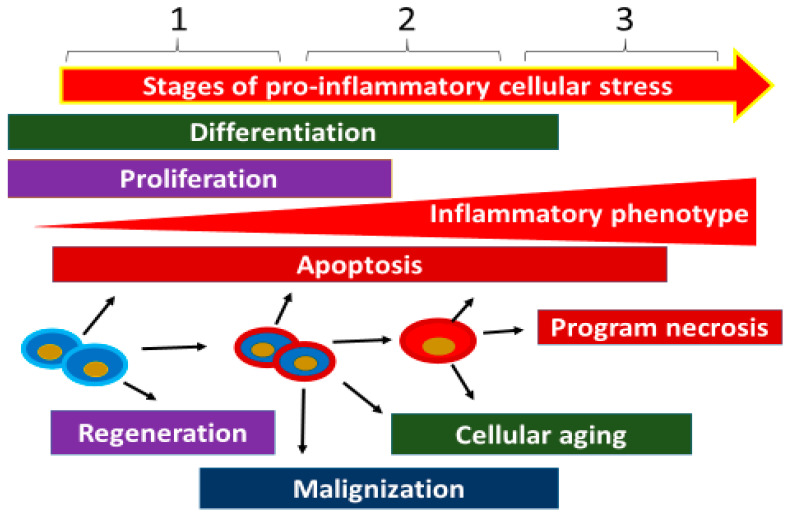Figure 4.
Three stages of cellular stress development. Stage 1 is typical for proliferating cells; it is characterized by the predominance of growth factors in the secretory phenotype; relatively moderate manifestations of pro-inflammatory phenotype (including oxidative stress); dominance of anabolic processes; and adaptation to the moderate action of damaging factors. This stage can be complicated by the processes of tissue metaplasia and malignization. At the level of tissue stress, this stage is also typical for many physiological and pathology borderline processes, as well as for the repair (regenerative) stage of inflammation. Stage 2 is a transitional stage; it is characterized by different proportions between the first and third stages. Stage 3 is characterized by more pronounced manifestations of the pro-inflammatory phenotype in response to the increasing effect of damaging factors; increasing insulin resistance; cell cycle blockade; accelerated cell aging; an increasing role of autophagy and mitochondrial stress; and a high probability of programmed necrosis in the variant of pyroptosis, NETosis, and necrobiosis. When microvessels and migrating leukocytes are involved in these processes, conditions emerge for the formation of a canonical inflammation focus or for the development of systemic microcirculatory disorders as signs of systemic inflammation.

